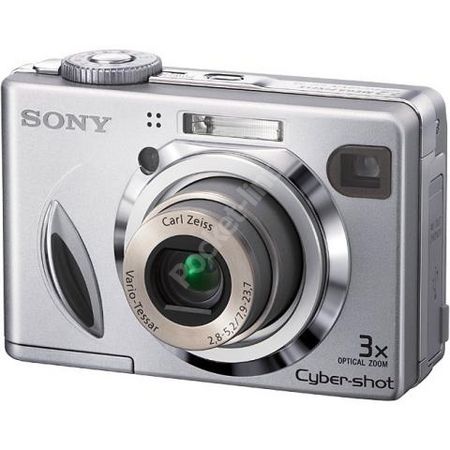Sony’s DSC-W7 is the latest compact digital camera to be launched that offers 7.2 megapixels in a small package. But do we really need this many megapixels in our pocket or are camera manufacturers merely trying to convince us more is better? We took a look and found out.
The DSC-W7 like its predecessor the DSC-W1 isn’t the prettiest camera we’ve ever seen. The square rectangular design has no design references to Sony ultra-thin T range and there is little inspiration to be had. That said, the camera is functional. The buttons are in the right place and the large 2.5in LCD - a popular feature with Sony for the time being - dominates the rear of the model.
The front is fairly basic, offering a 3x optical Carl Zeiss zoom lens and elsewhere buttons have been kept to a minimum. Power, interestingly is proffered in the form of two AA rechargeable batteries and while this means you can pop into your local newsagents for more power you won’t get as much juice of it as you would a standard lithium-ion battery. That said, the top rating of an AA rechargeable recently increased again, whatever the rating of Sony’s offering, you can always buy more powerful cells.
What is nice however, is Sony’s understanding that a 2.5in LCD screen will quickly gobble the battery and Sony has opted to include an optical viewfinder. This not only helps you conserve that battery life, but also means that if it’s really sunny you still have the option of taking pictures without blindly pointing the general direction of your subject and hoping for the best. Even on sunny days we didn’t really have trouble viewing the screen though.
Inside, the camera offers a tad over excessive 7.2 megapixels from a 1/1.8-inch Super HAD CCD. Images can either be saved onto a Memory Stick (non-Duo) or saved on the rather pitiful 32Mb of internal memory. Shooting at the highest setting gives you 4 shots. So why Sony, just like other manufacturers, doesn’t increase this offering is a complete mystery, as its not as though flash memory is really that expensive.
Get past the annoyance of internal memory and the camera offers all the usual shooting modes found on most compact cameras. Everything from Seaside/snow to portrait is here and the even on the auto mode the camera does a good job of guessing what you are trying to achieve. However we did have trouble with the macro mode and trying to capture a ladybird up close.
Images however, unlike our experience with the T7 (see review) were sharp and impressive. Colours were bright and crisp and images clear and virtually noise-free. The camera’s capturing lag is minimal and this combined with the camera’s fast start-up time meant that you still had plenty of time to capture an image before it was too late.
Our quick take
Unlike the Sony's DSC-T7 this camera has gone for substance over style. The model isn't the prettiest of designs, however it will give you 7.2 megapixels in your pocket. As with the FujiFilm F10 and the Canon's Ixus 700 you have to ask yourself whether or not you'll really need such a high megapixel count.
If you're in it just from the “point and shoot” point of view then 7.2 megapixels is probably overshooting the mark. Likewise semi professionals looking for a field camera are more likely to opt for the Canon G6 or something with greater emphasis on bolting on further lens or additional flashes.
It is however a good all-round camera and that shouldn't be ignored. The large display is fantastic for viewing back images and the 7 megapixel resolution does mean that you can shoot wide and crop in later.

Sony DSC-W7 Digital Camera - 4.0 / 5
| FOR | AGAINST |
|---|---|
|
|
To recap
This is a good all-round model hampered only by its size compared to other compact cameras
